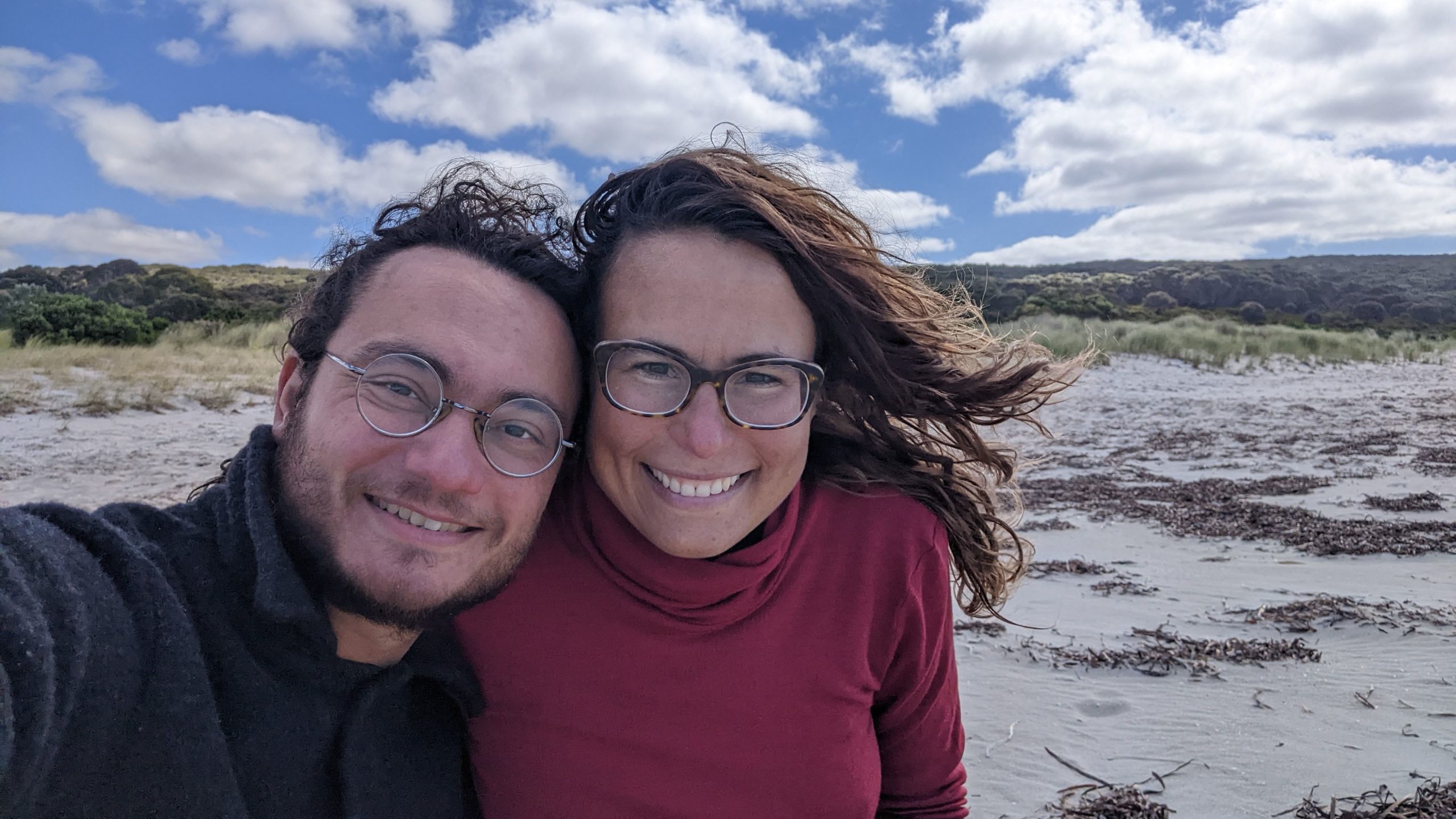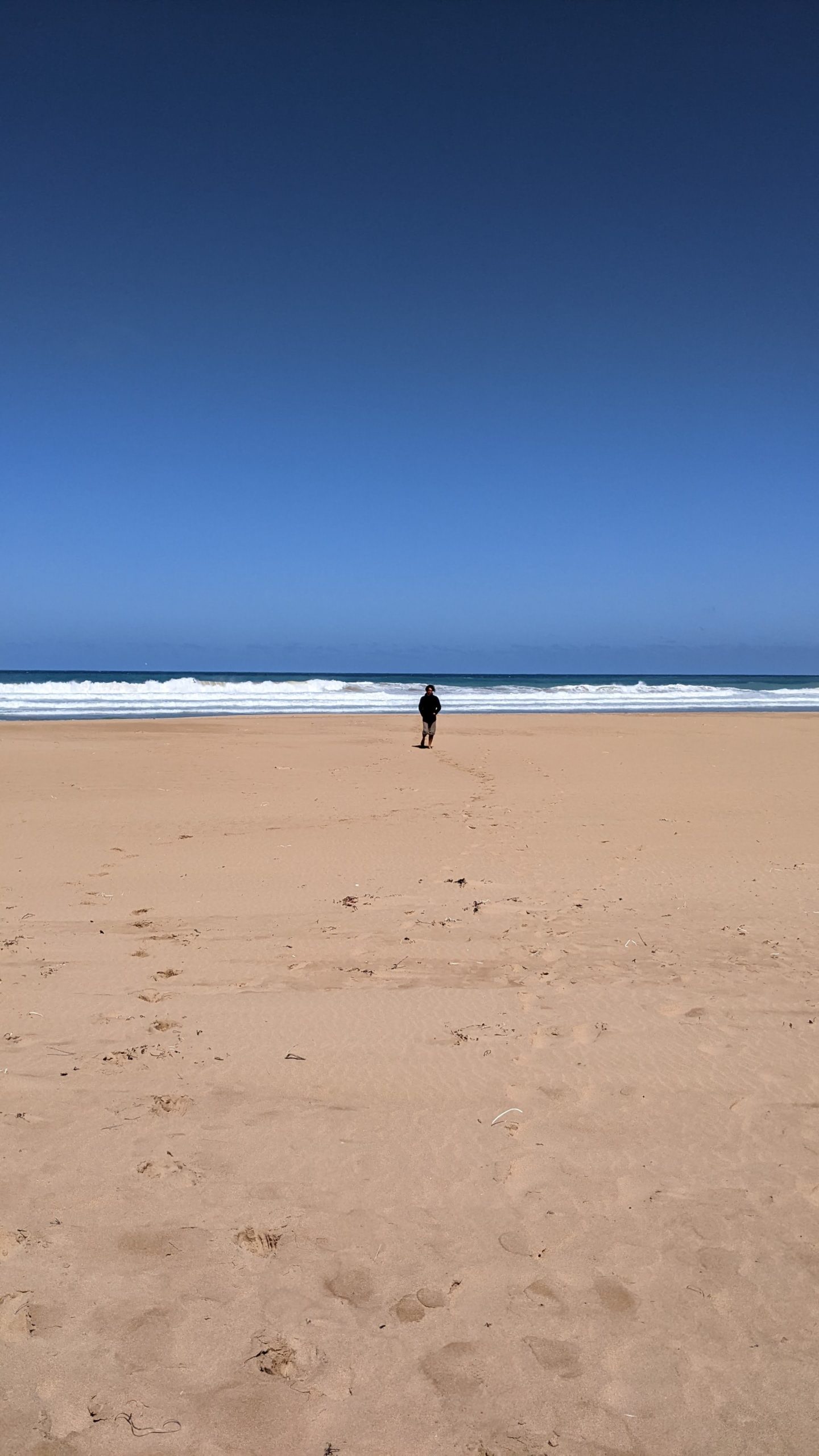How MCS made us nomads

Prologue
It still amazes me that I have become a “nomad” on the other side of the world.
How did two scientists born in Italy end up in a tent in the Australian wilderness?
It’s been a journey.
My name is Sara, and with my partner Mike, we moved to Australia for academic career and for love. Sometimes we dreamt of taking a sabbatical year to explore this amazing continent, knowing, deep down, that we would always be too busy to make it happen. Little did we know that we would be pushed into becoming nomads to improve my health.
It has been less than a year since I have been diagnosed with MCS (Multiple Chemical Sensitivity, also called Chemical Intolerance or Toxicant-Induced Loss of Tolerance). This illness has so many synonyms as much is unknown by most doctors that do not specialise in environmental medicine. Either they know it exists, or they cannot help you at all because they never read about MCS once. They therefore don’t even know a specialist to make a referral. This explains why it took me so many years, doctors, and medical exams before I could get a diagnosis. Here, you can read the official factsheet on MCS from the state of Victoria, Australia.
In short, I am poisoned.
How did that happen?
A combination of a likely genetic predisposition and environmental exposures to toxic chemicals during life (for example, I did research in a molecular biology lab). As the doctor put it, I became a “mine canary”. Yes, these chemicals are toxic to everybody, but do not create problems for most people: a healthy body is able to process and get rid of them. Previous exposure to toxic substances overloaded my body, that now cannot tolerate anymore small amounts of some specific chemicals that are widespread in our modern lifestyle. Once you have MCS it can be at different degrees of severity. If you keep getting exposed to toxins, the chemical intolerance may worsen, and be triggered by a larger variety of chemicals. Depending on how you became chemically intolerant you might react to different substances. To each their poison, some more common than others.
What is my “poison”, you may ask?
For a long time it was mainly optical brighteners, chemicals that in my instance trigger both MCS and proper skin allergic reactions (we will come back to this in a sec). During the years it took to get a diagnosis of MCS, I didn’t know what was going on and how I could have prevented the worsening of my health. Now the list of toxic chemicals triggering the MCS is much longer and includes, among other things, weed killer and mould.
Never heard of optical brighteners?
Me neither, until I discovered that they were the culprits responsible for my invalidating allergic reactions. They are fluorescent dyes, nowadays widely used literally everywhere to make colours look nicer. I am talking about almost all textiles, most plastics and paper, glues, building materials, cleaning products, perfumes… (the list goes on. This webpage of the European Union kindly enumerates the uses of one of the most common optical brighteners).
What is truly interesting is the type of allergic reactions optical brighteners give me, that made its diagnosis very complicated: “photoallergic contact dermatitis”, the allergy doctor called it. What does “photoallergy” mean? Sun allergy, of all things.
An Italian allergic to the sun?
Really?!?
Yes, and no.
To optical brighteners, actually. In the sun.
I am not actually allergic to the sun (you can see in my photos that I can get quite tanned!). Rather, my allergic reactions happen only when:
- my skin gets first in contact with a specific chemical (that can vary depending on the person, in my case optical brighteners)
- and only then goes in the sun.
Two-three days later, I got a truly painful rash accompanied by strong nausea and other fun symptoms that would make you wish it was just the flu. The term “rash” starts to sound like an euphemism if I cannot find the culprit that is contaminating my skin with optical brighteners. Imagine waking up in the night, feeling like someone had poured acid on your skin. And, of course, the rash has the shape matching the area where the skin got in contact with the allergen (“contact dermatitis“). If my skin doesn’t touch optical brighteners, I don’t even get red in the sun. As I discovered later, people with MCS are also more likely to have photoallergy (surprise surprise… of course everything makes sense when you already know the answer).
In summary:
I am both allergic and chemically intolerant
to most modern products.
Bingo!
Most of my doctor’s patients with MCS have one or two triggers, and that is already plenty to handle. Prevention of further environmental exposures is key with MCS. I spent years looking for a doctor that could tell me why I was getting sicker. When I found a diagnosis, the MCS was already out of hand.
But now I know.
And I want to get better.
There are some treatments that my body is able to handle and responds to (finally a good news). However, there is really only one way to improve and get my life back: live in a healthy environment away from the toxic chemicals that trigger MCS.
We spent a year trying everything to make our rented house a safe, healthy place. Without true success.
In the end, that didn’t make a difference. The final blow to my precarious improvements arrived outside the house border: summer came to an end and all our neighbours started spraying weed killer in their gardens.
In the last year we spent so much energy, time and resources before being faced with the truth: even if I finally got a diagnosis, if I keep living within a city I cannot truly get better. Everything I conquered thanks to the treatments was gone in just a couple of weeks, all because of something we couldn’t control. My health was worse than ever, and the longer I stayed in the house the worse I was getting. In agreement with the doctor, we have to find a healthier way to live. Easier said than done, given that any house I could be renting would have been cleaned with products I am allergic to and impossible to completely remove from most materials (we had this year to try everything we could). Any neighbour can apply anytime weed killer or start renovating their house and we would be back to square one.
It is hard to know where to start.
The doctor gave us examples of patients that improved a lot by living away from their triggers. They had to take quite radical solutions that worked for them (such as living in a tent in a field in the middle of nowhere) and they were not even sensitive to so many things as me. In the doctor’s own words, we have to find our own way.
But there is a silver lining: I can still travel
Our country of adoption is actually a huge continent, mostly empty, wild and with any climate you can desire.
So, not really by choice, we are going to be nomads in search for our little piece of paradise.
A journey to live. Truly.
Where will we find a new home?
It is going to be an adventure.

Read more about MCS
Living with MCS
It is hard to put into words what it truly means to have this disabling illness if [as I hope] you, or someone close to you, never experienced it.
After being diagnosed, I found online the story of Amelia Hill:
https://ameliahill.com/my-story/
Even though she is in South Australia too, I never met her. But her story gave me a voice. She has been able to capture and truly communicate what it means to live with severe MCS. Thank you Amelia!
What is MCS? What about risk factors?
I had just being diagnosed with MCS. I was looking for more info while I was trying to digest what an earlier diagnosis could have meant. I know, it is a very "scientist" way to cope with the grief of seeing your life hijacked by a chronic illness.
Still, to read in a scientific paper "my" story was cathartic not only for me but also for my family. Not literally my story of course, but a detailed description to what happened to me and to so many others with MCS:
This reading opened my mind. Not only it clearly describes what is MCS, but details what I should have avoided to not worsen it.
P.S.: Don't be scared by the fact that it is a scientific paper! The introduction and the discussion are written not only for specialists in the field but for a broad public (my family read it too!)